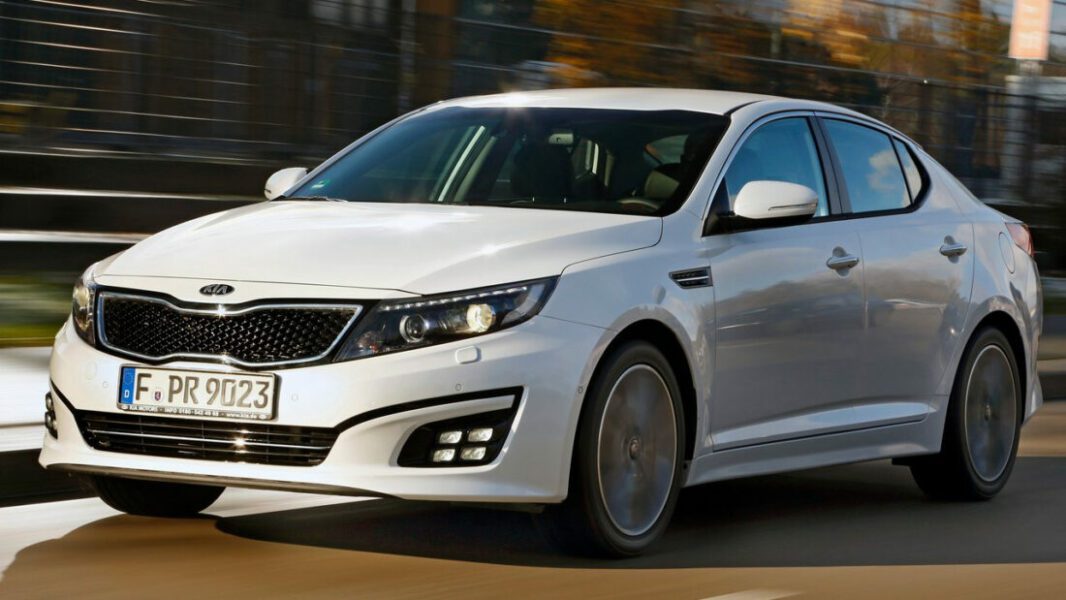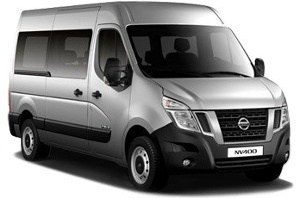
Тест: KIA Optima 1.7 CRDi (100 кВт) TX A / T
Фракция социал-демократов, победившая в Октябрьской революции в России, отстаивала идею насильственного переворота, и история говорит, что им это удалось.
Что касается Киа, она, похоже, придерживается аналогичного подхода. Они, вероятно, говорили себе, что потребуются годы и годы, чтобы покупатели осознали, насколько хорошие автомобили мы делаем. Давайте сразу же подарим им Optimo! Название Оптима происходит от латинского наречия optima, и словенский перевод этого слова — лучший, отличный (Великий словарь туйк, Цанкарьева заложба, 2002). Это так просто.
Возможно, кто-то еще вспомнит предшественников Kia Optima для тех, кто этого не делает: Clarus и Magentis. Каждый раз баптистов вдохновляли латинские слова из предыдущих двух, но дважды сравнение между сделанными машинами и значением латинских слов было не самым удачным (clarus — ясный, колокольный, яркий, чистый; magis — даже больше) . Разница между предшественниками и Optimo во всех отношениях значительна.
Внешний вид: по крайней мере, для нижеподписавшихся, это один из самых удачливых лимузинов последних лет. Что касается и интерьера. Вместительность: Optima — первый автомобиль высшего среднего класса, который может легко конкурировать с самым просторным автомобилем — Škoda Superb — в багажнике и особенно на заднем сиденье. Материалы и качество изготовления: конечно, именно здесь самые длинные из конкурентов из премиальных логотипов, но о плохом впечатлении и небрежности в окончательной отделке говорить не приходится.
Что еще остается конкурентам?
Конечно, предложение в области двигателей, где словенский заказчик Optima может выбрать только коробку передач, шестиступенчатую механическую или автоматическую коробку передач, турбодизельный двигатель мощностью XNUMX киловатт получает в обоих случаях. Однако даже с «дефектным» моторным оборудованием ошибка незначительна, так как у других брендов, где они предлагают больший ассортимент двигателей, покупатели выбирают то же самое почти на девять десятых.
Конечно, Optima — это автомобиль, для которого мы также можем найти некоторые менее «оптимальные» характеристики и критиковать его. Опыт подсказывает, что все равно найти идеальный продукт сложно. Как и все модели из предложения Kia, Optima также менее оптимальна при поворотах или простом захвате рулевого колеса. На автомобильном сленге это называется менее коммуникативный руль. Водитель обычно может узнать только по визуальному впечатлению, по какой дороге он едет, а рулевой механизм (электроусилитель руля) не достигает правильного контакта между ним и дорогой, даже с Optima. Но здесь также следует упомянуть, что с Optima мы можем легко поворачивать рулевое колесо при парковке или ином медленном движении, а радиус поворота также похвально мал (10,5 метров).
У нас были некоторые комментарии по поводу характеристик торможения при измерениях. Мы не могли судить, насколько длиннее тормозной путь за счет резиновой обуви, но тормозной путь чуть менее 40 метров на Optima — это то, что не кажется самым оптимальным.
В любом случае у разных водителей разные потребности в работе двигателя. Нижеподписавшимся показалось, что двигатель, несмотря на объем всего 1,7 литра и «всего» 100 киловатт мощности, по-прежнему довольно резкий, хотя его мощность также сдерживалась автоматической коробкой передач. Конечно, такого двигателя для гонок нет (да и не должно было быть), но мощности всегда достаточно, чтобы превысить любую из разрешенных скоростей в нашем «лекарстве». Комбинация двигателя, современной шестиступенчатой автоматической коробки передач и дополнительной программы, активируемой кнопкой экологичного рулевого колеса, обеспечивает очень экономичный расход топлива.
Таким образом, средний расход чуть более 6,2 литра на 100 километров при постоянной скорости около 125 километров в час вполне реалистичен (при считывании с маршрутного компьютера, если мы рассчитываем его по пройденному расстоянию и действительно заправленному и израсходованному топливу, он поднимается на 0,2 литра). Даже более обутые в цепочки ноги водителя не поднимались выше среднего показателя 8,4 литра на 100 километров, что означает, что результаты все еще очень похожи на «брата» Kia, Hyundai i40 CW, который мы тестировали прошлым летом.
Даже в остальном, два «упомянутых» автомобиля во многом схожи, когда речь идет о технических решениях, касающихся листового металла разной формы или внутренней части автомобилей, покрытых разными веществами.
Выбор Оптимы, вероятно, во многом зависит от того, подготовился ли клиент уже морально к прыжку, к большевизму, упомянутому во введении, готов ли он к тому, что даже автомобиль с торговой маркой Kia может быть революционным лучше, чем его предшественники…
Какое слово мы можем добавить к цене. Фактически, мы также не можем игнорировать известную правду об этом: без ничего нет ничего. В случае с Optima все наоборот: за вычет немного больше, чем вы ожидаете, вы получаете еще одно дополнение, которого не ожидаете. Это означает, что все будет немного проще: вы получите много за хорошую цену.
Текст: Томаж Порекар, фото: Саша Капетанович
Kia Optima 1.7 CRDi (100 кВт) TX A / T
Основные данные
| Продажи: | KMAG dd |
|---|---|
| Цена базовой модели: | 31.990 € |
| Стоимость тестовой модели: | 31.990 € |
| Власть: | 100кВт (136 КМ) |
| Разгон (0-100 км / ч): | 10,9 с |
| Максимальная скорость: | 197 км / ч |
| Расход ECE, смешанный цикл: | 7,3l / 100km |
| Гарантия: | Общая гарантия 7 лет или 150.000 5 км, гарантия на лак 150.000 лет или 7 XNUMX км, гарантия XNUMX лет на ржавчину. |
| Систематический обзор | 20.000 км |
Стоимость (до 100.000 км или пять лет)
| Регулярные услуги, работы, материалы: | 1.430 € |
|---|---|
| Топливо: | 9.913 € |
| Шины (1) | 899 € |
| Потеря стоимости (в течение 5 лет): | 18.388 € |
| Обязательное страхование: | 2.695 € |
| СТРАХОВАНИЕ КАСКО (+ B, K), AO, AO + | 6.975 (€ |
| Рассчитать стоимость автостраховки | |
| Скупай | € 40.300 0,40 (стоимость км: XNUMX €) |
Техническая информация
| двигатель: | 4-цилиндровый — 4-тактный — рядный — турбодизель — установлен спереди поперечно — диаметр цилиндра и ход 77,2 × 90 мм — рабочий объем 1.685 см³ — степень сжатия 17: 1 — максимальная мощность 100 кВт (136 л.с.) при 4.000 об / мин — средний поршень скорость при максимальной мощности 12,0 м / с — удельная мощность 59,3 кВт / л (80,7 л. впрыск — турбонагнетатель ОГ — охладитель наддувочного воздуха. |
|---|---|
| Передача энергии: | передние колеса с приводом от двигателя — АКПП 6-ступенчатая — передаточное число I. 4,64; II. 2,83; III. 1,84; IV. 1,39; V. 1,00; VI. 0,77 — дифференциал 2,89 — диски 7,5 J × 18 — шины 225/45 R 18 V, окружность качения 1,99 м. . |
| Емкость: | максимальная скорость 197 км / ч — разгон 0–100 км / ч 11,6 с — расход топлива (ECE) 7,9 / 4,9 / 6,0 л / 100 км, выбросы CO2 158 г / км. |
| Перевозка и подвески: | седан — 4 двери, 5 мест — самонесущий кузов — передняя одинарная подвеска, рессорные ножки, трехспицевые поперечные направляющие, стабилизатор — задняя вспомогательная рама, многорычажный мост, пружины винтовые, амортизаторы телескопические, стабилизатор — передние дисковые тормоза ( принудительное охлаждение), задний диск, АБС, стояночный механический тормоз на задних колесах (педаль крайняя левая) — рулевое колесо с зубчатой рейкой, электроусилитель руля, 2,9 оборота между крайними точками. |
| Mase: | пустой автомобиль 1.581 кг — допустимая полная масса 2.050 кг — допустимая масса прицепа с тормозом: 1.500 кг, без тормоза: 750 кг — допустимая нагрузка на крышу: 80 кг. |
| Внешние размеры: | ширина автомобиля 1.830 мм, колея передняя 1.591 мм, задняя 1.591 мм, дорожный просвет 10,9 м. |
| Внутренние размеры: | ширина спереди 1.530 мм, сзади 1.530 мм — длина сиденья переднего сиденья 500 мм, заднего сиденья 460 мм — диаметр рулевого колеса 370 мм — топливный бак 70 л. |
| Сундук: | Просторнина пртляжника, измерена з AM стандартным комплектом
5 ковчков Samsonite (скупно 278,5 л): 5 мест: 1 чемодан для самолета (36 л), 1 чемодан (85,5 л), 1 чемодана (68,5 л), 1 рюкзак (20 л). |
| Стандартное оборудование: | подушки безопасности водителя и переднего пассажира — боковые подушки безопасности — шторки безопасности — крепления ISOFIX — ABS — ESP — гидроусилитель руля — автоматический кондиционер — электрические стеклоподъемники спереди и сзади — зеркала заднего вида с электрорегулировкой и обогревом — радио с CD-плеером и MP3-плеером — многофункциональное рулевое колесо — центральный замок с дистанционным управлением — рулевое колесо с регулировкой по высоте и глубине — датчик дождя — электрически регулируемое сиденье водителя — регулируемое по высоте сиденье водителя и переднего пассажира — обогрев передних сидений — раздельное заднее сиденье — бортовой компьютер — круиз-контроль. |
Наши измерения
| T = 14 ° C / p = 1.012 мбар / отн. vl. = 45% / Шины: Nexen CP 643 A 225/45 / R 18 V / Состояние одометра: 6.038 км. | |
| Разгон 0-100км: | 10,7s |
|---|---|
| 402м от города: | 17,6-е годы ( 129 км / ч) |
| Максимальная скорость: | 197km / ч (МЫ.) |
| Минимальный расход: | 5,9l / 100km |
| Максимальное потребление: | 8,4l / 100km |
| тестовое потребление: | 7,3 л / 100km |
| Тормозной путь при 130 км / ч: | 70,2m |
| Тормозной путь при 100 км / ч: | 39,8m |
| Таблица AM: | 39m |
| Шум при скорости 50 км / ч на 3-й передаче | 60dB |
| Шум при скорости 50 км / ч на 4-й передаче | 58dB |
| Шум при скорости 50 км / ч на 5-й передаче | 56dB |
| Шум при скорости 90 км / ч на 3-й передаче | 62dB |
| Шум при скорости 90 км / ч на 4-й передаче | 60dB |
| Шум при скорости 90 км / ч на 5-й передаче | 59dB |
| Шум при скорости 90 км / ч на 6-й передаче | 58dB |
| Шум при скорости 130 км / ч на 4-й передаче | 63dB |
| Шум при скорости 130 км / ч на 5-й передаче | 63dB |
| Шум при скорости 130 км / ч на 6-й передаче | 61dB |
| Шум холостого хода: | 39dB |
Общий рейтинг (342/420)
Если вы ищете действительно просторный седан и вас не волнует марка, Optima — оптимальный выбор.
Экстерьер (15/15)
Внешний вид действительно убеждает, поднимает репутацию бренда.
Интерьер (105/140)
Просторный и качественно сделанный салон впечатляет, на самом деле совершенно без замечаний!
Двигатель, коробка передач (52
/ 40)Если бы не было менее отзывчивого рулевого механизма, было бы еще убедительнее.
Ходовые качества (58
/ 95)Это дает ощущение безопасного положения, доступной педали, а также ощущение при торможении, но это не подтверждается измерениями.
Производительность (24/35)
На самом деле лучшее впечатление оставляет автоматическая трансмиссия, без дополнительных рычагов переключения передач на рулевом колесе.
Безопасность (39/45)
Шесть подушек безопасности, эффективная ESP, но без аксессуаров (направления, фонари).
Эконом (49/50)
Умеренный расход топлива, отличная гарантия (семь лет или 150.000 XNUMX км).
Мы хвалим и упрекаем
достаточно мощный двигатель
шестиступенчатая автоматическая коробка передач с дополнительной эко-программой
удовольствие от вождения и приятный внешний вид
отличное изображение на экране при движении задним ходом
на задней скамейке достаточно места для государственных игр
экономия потребления
простое соединение bluetooth
Разъем USB и AUX
единственный моторный выбор
более низкий комфорт вождения по сравнению с небольшими короткими неровностями
на передних сиденьях могло быть больше опоры для меча
эффективность торможения
